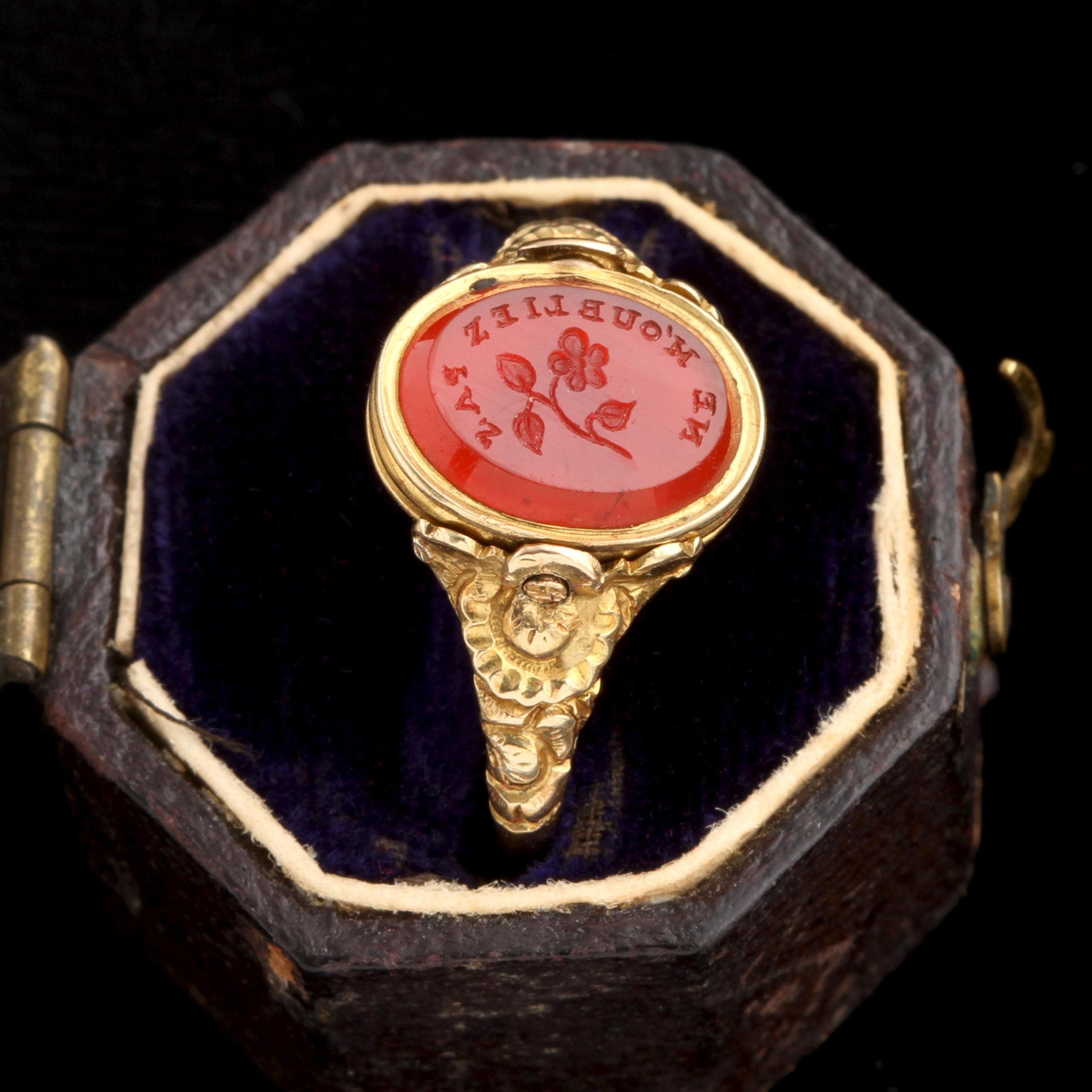After losing power and being banished first to Elba and then to St Helena, Bonaparte maintained a loyal following but they had to keep their loyalty a secret. Tribute rings like this were constructed so the wearer could show their political allegiance privately. The portrait of Napoleon would be worn hidden, against the skin, ready to be flipped around and worn outwards when the wearer was safely in the company of other Loyalists. Napoleon wears the uniform of the Chasseurs à Cheval. The Chasseurs were a cavalry regiment known for its illustrious combat history (and lavish uniform). On his head is the symbol of his rank: the bicorne, an 18th century hat worn by generals and officers of European and American army and naval officers. Usually the sweeter word ��souvenir” adorns French forget-me-not rings, but this is no ordinary forget-me-not ring. “Ne M'Oubliez Paz” is more of an aggressive direct command, meaning DO NOT FORGET ME. Napoleon commands it!
thedetails
- Materials
14k gold (tests), carnelian, glass, portrait miniature
- Age
c. 1820
- Condition
Very good - visible mark from a previous resizing but otherwise pretty much perfect
- Size
7, resizing not recommended; 11.7mm head, 1.6mm shank
Need more photos?
Send us an email to request photos of this piece on a model.

Aboutthe
GeorgianEra
1714 — 1837
As imperialist war raged in the Americas, Caribbean, Australia, and beyond, the jewelry industry benefited: colored gems from all over the empire became newly available. A mix of artistic influences from around Europe contributed to the feminine, glittering jewels of the era. Dense, ornate Baroque motifs from Italy showed up in Georgian jewelry, as did French Rococo’s undulating flora and fauna. Neoclassical style made use of Greek and Roman motifs, which were newly popular due to the recently uncovered ruins of Pompeii and Herculaneum. Lapidary methods improved: the dome-shaped rose cut was popular, as was the “old mine cut,” a very early iteration of today’s round brilliant cut.
The boat-shaped marquise diamond cut was developed around this time, supposedly to imitate the smile of Louis XV’s mistress, the marquise de Pompadour. Paste — an imitation gemstone made from leaded glass — was newly developed in the 18th century, and set into jewelry with the same creativity and care as its more precious counterparts. Real and imitation gems were almost always set in closed-backed settings, lined on the underside with thin sheets of foil to enhance the color of the stone and highlight it's sparkle. This makes Georgian rings tough for modern women to wear, especially on an everyday basis: genteel, jewelry-owning ladies of the 18th century were not famous for working with their hands like we are. Nor did they wash their hands as much as we do. Water will virtually ruin a foiled setting, so take special care with your Georgian ring. Very little jewelry from this period is still in circulation, and it's very difficult to repair.
please note:Terms of Sale
Antiques can be returned unworn and in original condition within 10 days of delivery for an exchange or refund minus the cost of shipping. Once a piece has been altered, including ring re-sizing, it is FINAL SALE.







